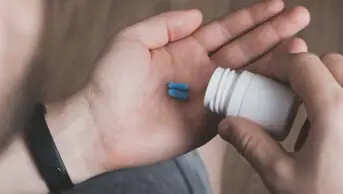In November 2018, I raised concerns about incomplete and underdosed intravenous (IV) infusions in Clinical Pharmacist
[1]
. On this occasion, I am writing to raise concern over the National Infusion and Vascular Access Society’s (NIVAS’s) new guidance on this topic, which was published in April 2019[2]
. Unfortunately, a pharmacist was not part of the group that created the guidance, nor was a draft of the guidance issued to stakeholders for comment before it was published. As a result, the guidance has not considered some important legal and professional issues.
After an IV drug has been administered and when the infusion bag is empty and disconnected, it will contain a residual amount of the drug; NIVAS’s guidance considers three options in this scenario:
- Option 1: discarding the infusion set;
- Option 2: flushing the infusion set manually;
- Option 3: flushing the infusion set with a closed system.
As there is no published evidence of harm or effectiveness from underdosing, the guidance concludes that option 1 is the preferred method. This is an important new precedent in healthcare. In the past, cost-saving proposals were expected to be accompanied by evidence that new products or methods are as safe and effective as the established, more expensive product or method. Cost-saving proposals were implemented only if supporting evidence was available. It is disappointing that over the past few years UK hospital practice has moved from flushing administration sets to a non-flush method to save money, without the necessary supporting evidence.
It could be considered professional negligence if a pharmacist dispensed medicines containing only 80%–90% of the prescribed dose. Why should this be any different for the administration of infusions?
Research is required to provide evidence to support the non-flush administration method. However, who will fund this research? Clinical trials for many injectable medicines may need to be repeated and summaries of product characteristics would need to be changed — this could be very expensive.
I have produced a summary of the advantages and disadvantages of the preferred administration method supported in the new guidance (see Table).
| Advantages | Disadvantages |
|---|---|
|
|
Revised guidance should also consider a new design of the IV gravity administration set, in which there is an additional needle-free port above the drip chamber. This additional port enables a syringe or infusion bag to be connected to deliver flushing solution. The use of a syringe can deliver smaller volumes of flushing solution (10–20mL) sufficient to flush the unadministered infusion, with no risk of fluid overload.
The use of saline syringes manufactured by the medical device supplier should also be considered. These devices do not require a prescription or patient group direction, and their use needs to be described only in a written clinical procedure, which can also reduce the need to record the use of individual flushes in the patient’s record.
I think that current guidance published by NIVAS should be considered ‘draft guidance’, which should be subject to stakeholder consultation. This should include legal advice and input from the Medicines and Healthcare products Regulatory Agency, the Association of the British Pharmaceutical Industry, the British Generic Manufacturers Association, royal colleges, the Royal Pharmaceutical Society, the Sepsis Society and other relevant stakeholders.
More comprehensive review and conclusions are required in revised guidance from NIVAS or other national guidance on flushing administration sets for small-volume IV infusions.
David Cousins, independent consultant in safe medication practice
Response from the board of the National Infusion and Vascular Access Society:
“The National Infusion and Vascular Access Society (NIVAS) produced the infusion flushing guidelines at the request of Medusa — the UK’s NHS Injectable Medicines Guide — and our NIVAS members so that we could clarify the current situation and offer some valid options to enable infusion practice. Medusa, which is made up of mainly pharmacists, has reviewed the guidance and is supportive of it.
“Practical and easy to follow, the flushing guidance that NIVAS has produced is just that — guidance — to assist in clinical practice as it is at the moment. As the guidance states, local organisations must decide in their medication safety committees which option they wish to follow, if any.”
References
[1] Cousins D. Patients are being underdosed: we need new guidance on small-volume drug infusions. Clinical Pharmacist 2018;10(12):356–357. doi: 10.1211/CP.2018.20205779
[2] National Infusion and Vascular Access Society. Intravenous infusion drug administration: flushing guidance. 2019. Available at: https://nivas.org.uk/contentimages/main/NIVAS-Flushing-gudiance-2019-final.pdf (accessed May 2019)
[3] Royal Pharmaceutical Society & Royal College of Nursing. Professional guidance on the administration of medicines in healthcare settings. 2019. Available at: https://www.rpharms.com/Portals/0/RPS%20document%20library/Open%20access/Professional%20standards/SSHM%20and%20Admin/Admin%20of%20Meds%20prof%20guidance.pdf?ver=2019-01-23-145026-567 (accessed May 2019)
[4] Thoele K, Piddoubny M, Ednalino R, Terry C. Optimizing drug delivery of small-volume infusions. J Infus Nurs 2018;41(2):113–117. doi: 10.1097/NAN.0000000000000268
[5] Cooper DM, Rassam T & Mellor A. Non-flushing of IV administration sets: an under-recognised under-dosing risk. Br J Nurs 2018;27(14):S4–S12. doi: 10.12968/bjon.2018.27.14.S4


